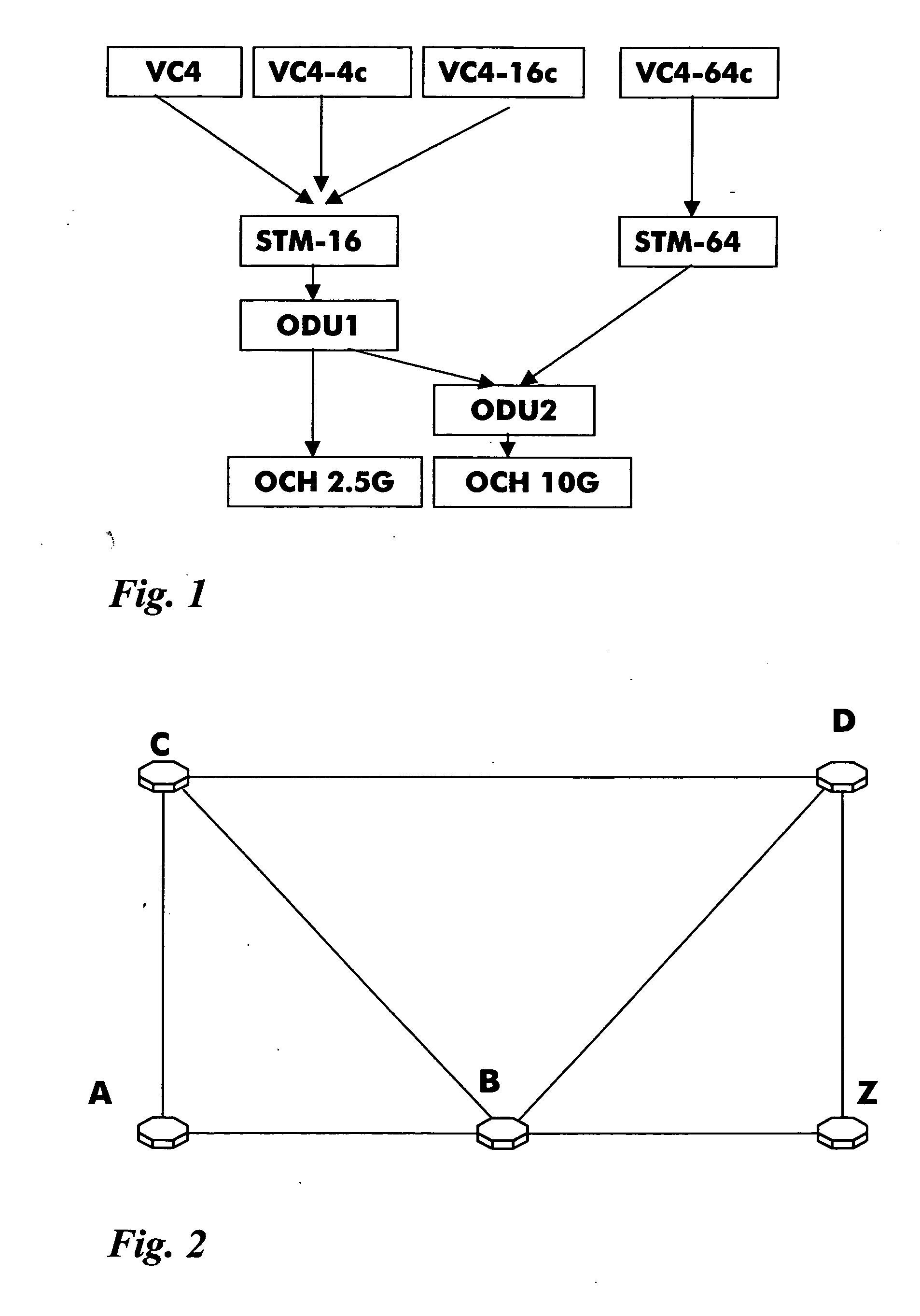Method and control plane for provisioning connections in a multi-layer transport network
a multi-layer transport network and control plane technology, applied in the field of telecoms, can solve the problems of complex recovery scenarios, communication overhead, and the work of the gmpls routing mechanism, and achieve the effect of simply changing the cost structur
- Summary
- Abstract
- Description
- Claims
- Application Information
AI Technical Summary
Benefits of technology
Problems solved by technology
Method used
Image
Examples
first embodiment
[0036] In the first embodiment, switching within the network is performed on client layer level, i.e., HOVC is switched on HOVC level at each hop between source and destination, ODU1 on ODU1 level and so on. As a general rule, if no server layer resources to the next hop are already provisioned, the smallest server level container will be used. This rule serves to avoid a need to negotiate the type of a server layer connection to be created. It should be clear, however, that any other predefined rule can be used instead or the server layer connection type can be negotiated.
[0037] According to the invention, routing is performed on cost per link basis but it is taken into account that also higher layer capacity is available for lower layer connections. In other words, the algorithm pretends that server layer connections were available even if not yet existing. Routing information is based on available capacity per layer. As long as only links are selected for a path, where server lay...
second embodiment
[0049] Further aspects of are now explained in a second embodiment, which uses the same network topology shown in FIG. 2.
[0050] The limitation of the first embodiment is that automatically created connections do not trigger multi-hop server trails but only single hop server trails. It is generally more efficient if multi-hop server trails, which we call forwarding adjacencies (FAs), are generated, but the policy to create them can become more complex. A simplified policy will be proposed below based on the expectation that an operator provisioned multi-hop forwarding adjacency is optimal.
[0051] A general rule of this improvement is that, if between a source and destination node A-Z a direct forwarding adjacency exists but which has no idle capacity, an additional server trail is created along the same links. Along these links the same cost metrics apply as described for the first embodiment. If the new server trail, however, cannot use the same route, different policies can be appl...
PUM
 Login to View More
Login to View More Abstract
Description
Claims
Application Information
 Login to View More
Login to View More - R&D
- Intellectual Property
- Life Sciences
- Materials
- Tech Scout
- Unparalleled Data Quality
- Higher Quality Content
- 60% Fewer Hallucinations
Browse by: Latest US Patents, China's latest patents, Technical Efficacy Thesaurus, Application Domain, Technology Topic, Popular Technical Reports.
© 2025 PatSnap. All rights reserved.Legal|Privacy policy|Modern Slavery Act Transparency Statement|Sitemap|About US| Contact US: help@patsnap.com



